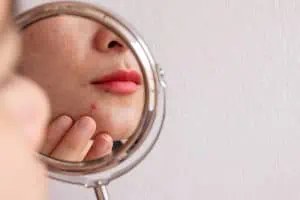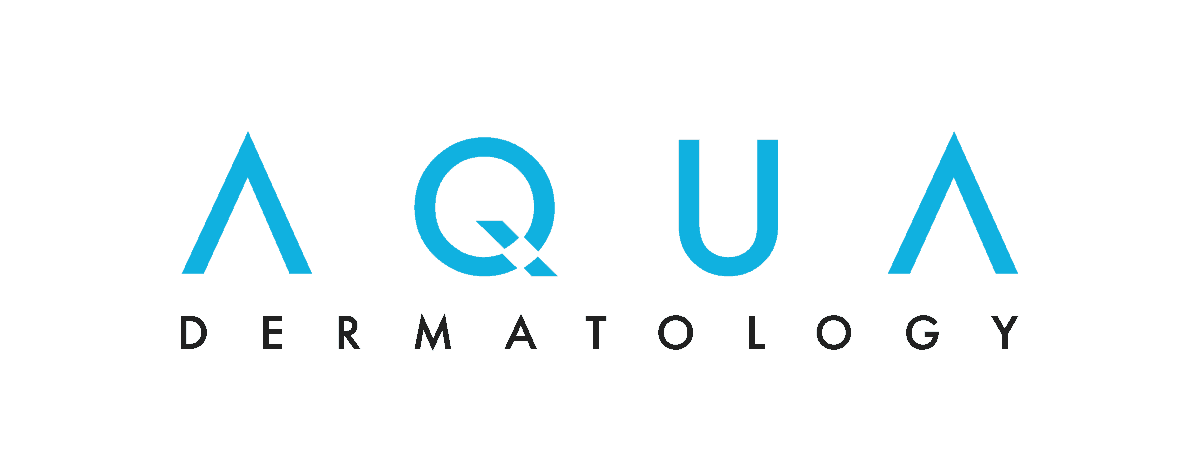
Medically reviewed by: Ted Schiff, MD
Acne can be frustrating, whether you get major breakouts or a few pimples here and there. Most people’s first instinct is to head to the drugstore and buy whatever looks promising — acne cream, acne spot treatment, acne face wash. But acne is a more complex condition than you might think, and even mild cases can be challenging to treat without drying out or irritating your skin. Knowing when to see a dermatologist for acne can help you get better results and avoid permanent acne scars.
Here are six times when it makes sense to make an appointment with a dermatologist. Your skin care provider will design a custom acne treatment plan, which may include prescription acne medication, other types of medication and in-office procedures such as laser therapy, chemical peels and HydraFacial MD.
1. Over-the-counter products haven’t improved your complexion
In some cases, drugstore cleansers and acne spot treatments are enough to send acne on its way. If they haven’t started to improve your skin after four to six weeks of consistent use, however, or they’ve made your skin worse, make an appointment. You may need more powerful medicines or even different types of medicines.
For example, if your dermatologist determines that you have hormonal acne, you’ll likely get better results by taking prescription medication that targets the hormonal imbalances and fluctuations that cause it, such as spironolactone (for women only).
2. You have moderate to severe inflammatory acne
This type of acne rarely responds to over-the-counter medication, so it’s best to go straight to your dermatologist for treatment. Inflammatory acne can be painful, causing red, pus-filled blemishes, nodules (firm lumps beneath the skin) and cysts (deep, fluid-filled lumps). It can appear on your face as well as your back, chest and shoulders.
While some over-the-counter products can help reduce inflammation, dermatologists often have to prescribe stronger treatments to clear the skin and reduce breakouts. One highly effective cystic acne treatment is isotretinoin, also known as Accutane. Oral antibiotics are also commonly prescribed. To shrink a large, painful cyst, the dermatologist might inject a corticosteroid into the cyst.
3. You develop scars as your acne clears
If blemishes have left permanent marks on your skin, it’s critical to work with a dermatologist to prevent or reduce further breakouts that could lead to more scarring.
Acne scars can be challenging to treat, and some can be disfiguring. Anyone with acne can develop scars, but the risk is higher if you pick at your acne, you have inflammatory acne and don’t treat it promptly or you have relatives who have acne scars.
4. Your acne affects you emotionally
Studies have shown that living with acne can lead to depression, anxiety, low self-esteem and a poorer quality of life — and not just in teens who may be bullied because of their appearance. In a study published in JAMA Dermatology of 50 women ages 18 and 40 who had acne, many of the women reported depression, anxiety and social isolation.
If having acne has changed your mood, social habits or relationships, see a dermatologist ASAP. Studies show that successfully treating acne can help relieve blemish-related emotional distress.
5. You developed acne after starting a new medication
A number of medications can cause acne or acne-like eruptions in some people, including certain steroids, barbiturates (sedatives), birth control pills and lithium. Drug-induced skin eruptions are hard to treat, so unless you’re able to safely stop taking the medication that’s causing them, you’ll need a dermatologist’s help to clear your skin.
6. You have body acne
Blemishes that appear on areas such as the back, chest, shoulders and buttocks may be more difficult to treat than those on the face because they’re often located deeper in the skin. Over-the-counter acne products may be helpful if your body acne is mild, but moderate to severe cases typically need to be managed with prescription medication.
It’s smart to see a dermatologist for body acne because some bumps that look like acne aren’t acne. Small, pimple-like bumps under the skin in the groin, buttock or armpit area could be signs of hidradenitis suppurativa, an inflammatory skin condition that can worsen without treatment. And rough, scaly bumps that look like small pimples may signs of keratosis pilaris, which happens when pores become clogged with dead skin cells. If you think you have arm acne, butt acne or armpit acne, let a skin care professional give you an accurate diagnosis.
Written by Jessica Brown, a health and science writer/editor based in Nanuet, New York. She has written for Prevention magazine, jnj.com, BCRF.org, and many other outlets.





